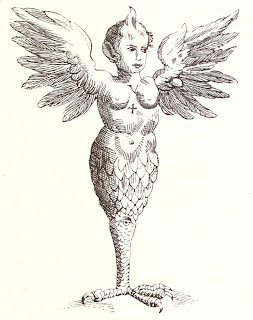Welcome to my latest blog post. Last week I discussed the idea of maternal impression and how women were blamed if their child was born with a deformity. This week I will be looking at something else women were blamed for, witchcraft. Specifically, I will try to see if there is a connection between disability and witches. It is a disability history blog after all!
Who Was Accused of Witchcraft?
I don’t know about you, but when I picture a witch in my head, I usually see an elderly woman that is ugly or perhaps deformed in some way. I therefore assumed that making a connection between disability and witches would be simple. However, this has not been the case. For starters, not everyone who was accused of witchcraft was a woman. Also, middle aged, rather than elderly women were the biggest demographic. Women past a childbearing age were a popular target.
When I typed disability and witches/ witchcraft into the search engine beginning with g and ending in oogle, I didn’t find what I wanted. Most results related to the 2020 movie, ‘The Witches’, which I will discuss later, but not much on actual witch trials and disability. All is not lost as there are small clues that link the two together. Historically, on the surface, accused witches and disabled people were similar (and I don’t mean they were both ugly!). Both groups were different from the rest of their community and were usually outcast as a result. Accused witches and in some cases, disabled people, were persecuted due to their differences.
Deformed Witches
The best example I can find connecting disability to witchcraft is from England, during the Lancashire Witch Trials of 1612. It turns out that one of the accused witches actually was deformed. One of the accused was a woman called Elizabeth Device. The court clerk Thomas Potts recorded the trials in a book called The vvonderfull discouerie of witches in the countie of Lancaster. A fascinating work if you ever get a chance to read it. It was published in 1613 though, so can sometimes be tricky to understand. Anyway. Where was I? Ah yes… the deformed witch! Sorry. I mean woman wrongfully accused of witchcraft. Potts describes Elizabeth’s appearance as follows:
‘This odious Witch was branded with a preposterous marke in Nature, euen from her birth, which was her left eye, standing lower then the other; the one loo∣king downe, the other looking vp, so strangely defor∣med, as the best that were present in that Honorable As∣sembly, and great Audience, did affirme, they had not often seene the like’.
This deformity may help to explain why she was accused of witchcraft. Witches were believed to be in cahoots with the Devil. The Devil would leave a mark on the witch which proved she worshipped him. Therefore, any unusual mark on the woman’s body could be used against her in the trial. Elizabeth’s deformity was a clear indication that she was involved with the Devil.
The fact that she had the deformity since birth may explain why some of the others were accused. You see, Elizabeth’s mother, Elizabeth Southern, alias “Old Demdike”, as well as two of Elizabeth’s children, Alison and James Device were also accused of witchcraft. I didn’t read this anywhere, but maybe the fact “Old Demdike” gave birth to a deformed child, who in turn had children, condemned them all. That is just my own theory though. Who needs concrete evidence anyway? I know people in charge of witch trials certainly didn’t!
Are All Disabled People Inherently Evil?
This is part of a much larger topic that I will cover at some point in the future. For now, let’s just focus on witches. Throughout history there has been a connection made between being evil and being disabled in some way. Thank goodness that is all in the past, right? RIGHT?? WRONG!!! The 2020 movie ‘The Witches’ has brought the topic back into the public’s imagination. In the film, the Grand High Witch has deformed hands and feet and is designed to be scary. This has rightfully annoyed people with limb differences as it is basically saying that they should be feared. This is the exact attitude that we should be moving away from, not putting in movies.
As you can see, some accused witches were disabled which most likely drew attention to them.
To keep up to date with my latest blog posts, you can like my Facebook page, or follow me on Twitter. You can find them by clicking the relevant icons in the sidebar.
Next time, I will move away from monsters to examine the court dwarf Jeffrey Hudson.
The Wheelchair Historian
Further Reading
Hardy, Tim, ‘The Discovery of the Lancashire Witches 1612’, https://www.invisibleworks.co.uk/the-discovery-of-the-lancashire-witches-1612/ Accessed: 19th February 2021.
Howlett, Daniel, George Mason University, ‘"Being Something Hard of Hearing": Disability during the Salem Witch Trials’, Stevens C Prefunction (Hilton Chicago), Saturday, January 5, 2019 https://aha.confex.com/aha/2019/webprogram/Paper26924.html Accessed: 19th February 2021.
Kranking, Emily, ‘The History Behind the Ableist Themes in 'The Witches'’, November 17, 2020 https://themighty.com/2020/11/the-witches-limb-differences-disability/ Accessed: 19th February 2021.
MetzlerIrina, ‘Disability, Witches and the Middle Ages: Some Mythbusting’, Thursday 10 Oct 2013 https://irinametzler.wordpress.com/2013/10/10/disability-witches-and-the-middle-ages-some-mythbusting/ Accessed: 19th February 2021.
Potts, Thomas, The vvonderfull discouerie of witches in the countie of Lancaster (London, 1613), http://www.gutenberg.org/files/18253/18253-h/18253-h.htm Accessed: 19th February 2021.
Sparks, Doug, ‘5 Facts You Didn’t Know About The Salem Witch Trials’, Published October 30, 2017 https://www.mvmag.net/2017/10/30/salem-witch/ Accessed: 19th February 2021.


